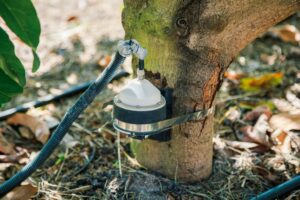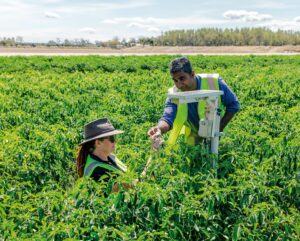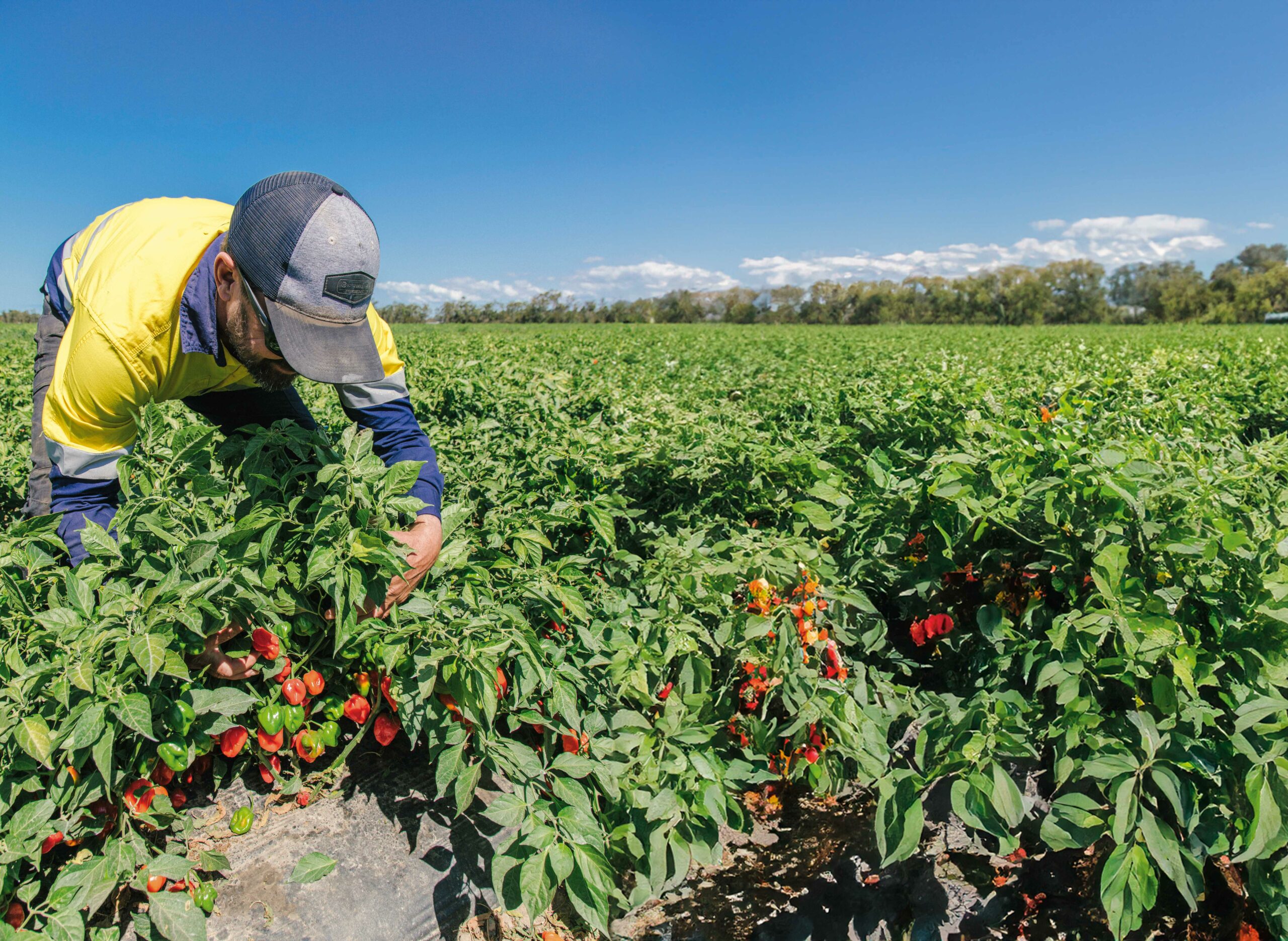Smart Farm technology for better farming and ecosystems
The Smart Farming Partnerships program is an industry collaboration to focus on protecting ecosystems in the Great Barrier Reef catchment area, using technology that monitors nutrient leaching, sediment run-off and water efficiency.
Commencing in October 2019, the Digital remote monitoring to improve horticulture’s environmental performance (ST19024) project involves collaborators including Hort Innovation, Applied Horticultural Research, Freshcare, Hitachi Vantara, Landcare and industry bodies Greenlife Industry Australia, AUSVEG, the Australian Banana Growers’ Council, Queensland Fruit and Vegetable Growers, and Smart Farm grower sites.
Demonstration ‘smart farm’ sites were established in banana, avocado, vegetable and nursery properties to initially establish a benchmark of data through a digital dashboard. The ongoing development of the modelling from the data will allow growers to predict and manage plant health and nutrient loss more effectively.
A number of instruments have been utilised to measure the outputs of the demonstration sites including dendometers, soil moisture probes, sap flow meters (for avocados) and weather stations.

The demonstration site for vegetables is within Austchilli, a major export grower of chilli and avocados. The primary focus for the company is value-add products and ingredients into food industries, supplied year round at a consistent volume.
Austchilli utilise technology across all facets of the business from growing chillies through to packaging to maximise efficiencies and minimise waste.
Within only a few kilometres to the coast, and the Elliot River, Austchilli founding director and owner, David De Paoli considers the company a custodian for environmental stewardship of the Great Barrier Reef and Fraser Island.
“Austchilli is known for using technology to improve business efficiencies, so we were approached to be part of the Smart Farm project from the beginning,” said David.
“When you grow commercially everything hits and tests you. As a commercial grower we need to forecast our supply to meet customer demand.
“Going into this program it was hoped to take some of those variables out. Input costs across the world have increased. It is a major concern, so this project will help us to reduce our costs to the bare minimum that the plant needs for production. With the forecast of El Nino, we are going to be dry, so every drop of water has to count. We place it at the right time, at the right place and the right amount to maximise yield, minimise cost.”
In essence, David is looking to use the learnings and technology from the project to give commercial outcomes that benefit the business.
The data from the sensors can be accessed via mobile phone apps or on site, to give staff the ability to monitor plant stress and respond accordingly.

According to Kaushal Gunasekara, agronomist with Austchilli, the data and forecast can give insights into when irrigation needs to be turned on or off, or if the plant is stressed from other factors. Kaushal also stressed that soil moisture probes may indicate wet or dry conditions but a plant-based sensor such as sap flow meters will give a more complete picture.
For chillies, the root depth can extend down to 50cm, however moisture and nutrient uptake occurs in the top 25% of the roots. Applying the right amount of water and nutrients in that zone means greater uptake by the plant for stronger health and yield. Over application however may lead to nitrate leaching and sediment run-off. From a commercial perspective, it is a more cost effective approach to water and input management.
Cover crops for the next trial
The project is due to initiate a further trial late in 2023, where the focus for Austchilli will be the use of cover crops to manage soil health as an extension of this project.
By using a cover crop, further prevention of leaching and run-off can be achieved, while improving the soil health and lowering soil erosion.
“Previous trials aimed to understand the automation, technology and processes to improve productivity and environmental outcomes,” said David.
“The focus for this trial on cover crops is to keep the soil healthy and improve microbe activity, nitrogen fixing and improving organic matter in the soil.
“Bundaberg can be quite windy, so the cover crop also acts as a wind barrier between rows, keeping the soil cooler, therefore lowering the need for further irrigation and lowering the risk of pest and disease pressure.”
David said that the project has given the company baseline data for analysis. The next stage is to convert it to a commercial system that growers can adapt very easily to their own benefit.
“It is something to be proud of, having this type of technology on your farm. Customers are very switched on, so when you tell them you are improving the environment, using robotics and automation to keep costs down, they love it.
“For the grower, we can increase yield and lower plant stress and soften the extremes. The key is to farm smarter, not harder, and be profitable. Identify your costs, work together with industry bodies and local associations, and the researchers, to move forward to adopt all this technology so we can benchmark ourselves against the world and compete more effectively with economies of scale.”

